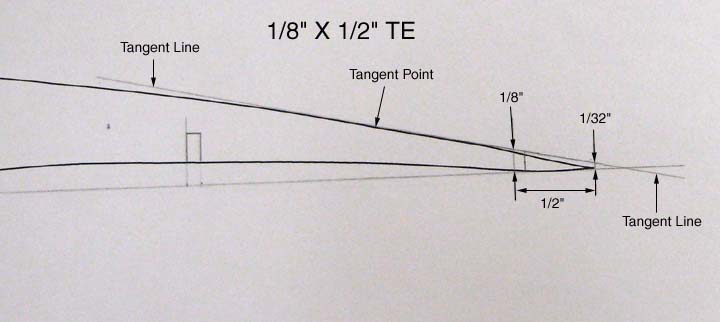From: David HardingTo: 'Tandy Walker'Sent: Friday, December 11, 2009 10:32 AMSubject: RE: 28 Speed 400 Cloudster - Wing Tip Pieces and Wing Rib Patterns
Hi Tandy, just wanted to share some experience I have found. When making wings the way you are, using an airfoil computer program you end up with ribs that only fit the true airfoil when the TE goes to a sharp edge; not a good thing structurally and hard to make too.
I always lay out the rib and figure the increase in chord necessary to end up with the TE thickness I desire; maybe 1/32 for a small chord wing or even 1/16 for a bigger one. Then I draw, print and cut the ribs to the extended dimension but leave the TE in the same place as the original design. Then cut the TE to match the new dimensions in terms of thickness, at the rib interface and the desired final TE thickness. The chordwise dimension is unchanged from the original.
If you donít do this but build with a finite TE thickness you have changed the shape of the airfoil at one of its critical locations.
Dave
Dave,The picture below shows what I did on the Cloudster rib pattern to account for the 1/32" trailing edge thickness. I drew in a 1/32" thickness at the end of the airfoil and then projected a line forward tangent line to the top of the airfoil contour. As you can clearly see for the Cloudster's airfoil profile, this represents only a small deviation to airfoil section, but a deviation never the less. You provided a very good input Dave and the kind I like to receive because I learned something (thank you). I never thought of developing a rib pattern as you described above, but I will use your method the next time I am developing a rib pattern...........................Tandy
